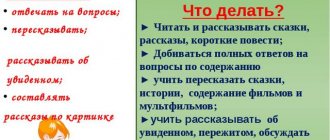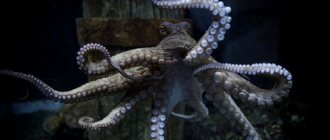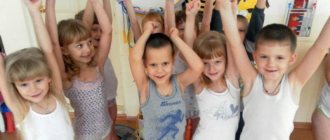HOMETOWN
In the forest region the Gzhat River flowed on deserted swampy banks. In ancient times, river beds were the main roads along which people moved. Sailboats and canoes at oars, loaded with grain and hemp, furs and honey, skillfully moved from one channel to another, leaving the wilderness of the forest, until they emerged into the vastness of the great rivers of the Volga or Dnieper.
The Gzhatsk pier grew over the years, was developed, and received the title of a city with its own coat of arms. Nowadays, ancient Gzhatsk is named after Gagarin in honor of the first cosmonaut of the Earth, who was born here.
Cities, like people, change their appearance. Before our eyes, a quiet town from a wooden, one-story town, with vacant lots and vegetable gardens, becomes elegant and modern.
Everyone cherishes this modest corner of the Russian land, where water lilies sway on the calm waters of the shallowed Gzhati, and swifts fly in the evening air. It seems that swifts really cut the sky with their wings, like scissors. You expect that blue and pink rags of the sunset sky are about to fall on new tall buildings, on young gardens, on a spacious square with a monument to the discoverer of space.
This is Gzhatsk - a living monument to Yuri Gagarin!
FIRST SPRING
Yuri was born in Gzhatsk, but his family was not urban, but rural. The same as thousands of others in Russia.
The father, Alexey Ivanovich, came for his wife and newborn son on a collective farm horse harnessed to a sleigh. We left early in the morning. Here we glimpsed the last house on the outskirts of Gzhatsk, the last city front garden. All around lay a quiet snowy plain.
Snowflakes were still floating in the air, but the river, invisibly, centimeter by centimeter, was already washing away the coastal grainy snow. Along the well-worn track the sleigh turned into the village of Klushino.
Spring is a special time in Gagarin’s short life. He was born on March 9, 1934, and at twenty-seven years old on April 12, 1961, he became the first person to fly into space.
GAGARIN genus
Grandfather Ivan Gagara, so called for brevity (little Yura did not find him alive), was a newcomer to Klushino. A traveling carpenter, he moved to the Smolensk region from the banks of the Volga. Six sons were born to him in Klushino. The youngest of them, Alexey, later became the father of the First Cosmonaut.
The peasant family of the mother, Anna Timofeevna Matveeva, was a native Gzhatian. Grandfather Timofey, while still a teenager, went to work in St. Petersburg, the then capital of Russia. He became a metalworker at the Putilov plant. The Matveev family returned to their homeland, Gzhatsk, only before the October Revolution. In addition to Anna, whose family name was Nyura, there were also daughters - the eldest Maria and the youngest Olga and two sons.
SISTER ZOYA
Returning with newborn Yuri to Klushino, Anna Timofeevna turned her son around, put him in a creaky cradle, which had been brought from the attic a few days before, and called her daughter.
- Do you like your new brother? Seven-year-old Zoya looked seriously at the baby.
- Really like. He has fingers like peas. Ma-a-lazy...
Yura's first night under his parents' roof in a hotly heated hut was spent listening to the singing of a cricket.
As soon as the morning light broke through the icy window like pink snakes, Zoya quickly jumped out of bed and, barely reaching the cradle, brushed a dark strand of hair from her brother’s forehead...
The cackling of a goose, the mooing of a hungry cow, the passionate crow of a rooster - all the discordant village music was already bursting from the farmstead into the hut. A new day was beginning, and it was time for the mother to get back to her usual work.
At first, Yura was nursed by her grandmother. But when she almost let the three-month-old baby fall from her lap, Zoya said decisively:
“I’ll look after Yurushka myself.” Baba Tanya is old, she will break it.
Yuri Gagarin's beloved sister earned his gratitude: he grew up in her arms. Just like the youngest in the family, Boriska.
The Gagarins had four children: Valentin, Zoya, Yuri and Boris.
COUNTRY SUMMER
The Gagarins' hut stood next to last on the outskirts of the village, not far from the windmill. The region here is flat. Like an apple on a plate, the gaze rolls across the meadows and fields, lingering only on stacks of rye straw and broom bushes.
Groves, hills, a long country road - this is the land on which fortresses were once built and battles raged. It is not for nothing that earthen embankments are still called “dwellings of Russian heroes.” And yet, of all the traces of history on the Klushino land, the most significant will probably remain the trace of the little boy who learned to walk here. After all, he was destined to be the first to see our Earth not as a flat plane, but as a blue ball! But this is still a long way off.
The soul of the Gagarin family was the mother. It was she who brought patience and hard work into the house - something that later distinguished all her children.
When the mother was not at home, the father alone managed the children and the household. He kneaded and baked the bread himself. His hands were carpenter's, accustomed to an ax, and not to small household work, so he cut himself a special spatula, which he used to knead the dough. Any work was not a burden to him.
As soon as the children began to babble, move around the hut, holding their hands on the wooden sofa, carefully planed and knocked together by Alexei Ivanovich, the father would talk to them, teach them something. In the evenings, the elders - Valentin and Zoya - asked to tell a fairy tale, and the father colored with his own imagination a simple story about a bear - a linden leg...
Harmony and peace reigned under Gagarin's roof. Yura fell asleep happy.
WINTER JOYS
At three years old, Yura could clearly pronounce all the letters, even the letter “r”, which is difficult for children. He didn’t lisp, didn’t lisp. And apparently he began to memorize letters very early, so by the age of five he could already understand them well.
His mother liked that he quickly memorized poems and was not shy about reciting them in front of strangers.
“Oh, dear,” she said, “how smart you are, what a fine fellow.” And your shirt is blue, and your buttons are white... Did your dad buy it for the holiday? Our dad is kind, good...
In this blue shirt, Yura first went with his elders to a school matinee. Long before dawn, when the sleepy December morning had not yet had time to open his eyelashes and blink away the fluffy frost from them, he had already jumped off the stove, woke up Valentin and Zoya: “Don’t be late!”
The Christmas tree was new to him. Wearing hemmed felt boots, he climbed onto a chair and read poetry. They clapped for him.
Winters in Klushino lasted long, with snowstorms blowing for days. The house creaked. It seemed that a little more - and the attic would be washed away by a stream of snow. The birch tree outside the window jingled in the wind with ice-cold earrings.
- Well, it’s gone! - said the mother, shaking off and sweeping her felt boots with a broom. — I barely found the well.
But as soon as the blizzard subsided and the plump snowdrifts glistened in the sun again, Yura got up on homemade skis and rushed into the nearest forest. How quiet it was there! But, wagging his fiery red tail, a fox ran across the path. What a joy!
My favorite pastime was jumping on skis from the edge of an icy ravine, like from a small springboard. Yura Gagarin lifted himself off the ground for a short moment and seemed to be hanging in the air... It was happiness!
MEETING WITH THE PILOTS
The hot summer of 1941 was ending.
The rowan trees were red as blood. Blood was already flowing nearby: fascist troops crossed our border, and a wave of refugees was rolling along the Smolensk road. Sometimes, several families at once, they spent the night with the Gagarins.
Yura was still small. The word “war,” which alarmed the adults, seemed incomprehensible to him. His worries revolved around school. He often took out and examined the slanted notebook and non-pouring inkwell he had stored, with which he was going to go to first grade.
But the elders have no time for learning. At night, Klushino was awakened by the roar of engines and distant flashes: German bombers were flying towards Moscow.
One afternoon, two Soviet planes passed right over the roofs of Klushino. One of them was hit. The pilot barely had time to land the car on a swampy meadow when it broke in two.
The boys found themselves in the meadow in a matter of minutes. They eagerly inhaled the unfamiliar smell of gasoline and closely watched the pilot’s every move. Limping, the pilot walked around the wreckage of the plane. No, nothing can be fixed!
Suddenly the sky was filled with a roar: the second plane was returning to the rescue of a comrade. The pilot joyfully tore off his helmet from his head and waved it.
The boys heard the pilots say among themselves that this damaged plane had cost the Nazis dearly! Both were businesslike and collected. Yuri felt a special skill in them. They were unlike anyone he had seen before.
The Klushino guys brought empty buckets and helped pour gasoline from the damaged car. The pilots took off safely. The shadow of their plane quickly ran across the meadow.
Yura stood for a long time with his head raised. Oh, if only I could fly up with them! Rise high, high...
WAR YEARS
The Nazis burst into Klushino early in the morning on rattling motorcycles.
The Nazis immediately occupied the last Gagarin hut. The owners found themselves under the cold rain, which sowed and sowed with a kind of hopeless despondency. We spent the night in the garden. They spread straw and wrapped the children in sackcloth bags.
“We’ll have to dig a dugout,” the father said, coughing with a cold. “Otherwise we’ll be lost: winter is coming.”
The dugout became a shelter for a long time.
Teacher Ksenia Gerasimovna tried to continue classes. Yura Gagarin, together with other guys, picked up German paper bags in empty dugouts. They were cut into pieces, stacked and stitched into notebooks. The guys wanted to study in spite of the war.
Two winters “under the Germans” fell heavily on the Gagarin family. Father and mother endured misfortune steadfastly: they did not pander to the enemy, did not ingratiate themselves to him. Children were still taught to distinguish evil from good and follow only good! There was one good thing during the war years: loyalty to the Motherland.
OUR CAME
Klushino was a front line for a long time. The last days the battle took place only eight kilometers away. The nearby cannonade rumbled day and night, the sky turned red from the fires.
In 1943, on March 9, the very day when Yura Gagarin turned nine years old, Soviet troops liberated the village of Klushino.
The Nazis left the day before, on a frosty night. In the light of the moon, Yuri’s father noticed how miners in white camouflage coats were sneaking between the snowdrifts, laying mines. The snowy road became deadly for the advancing Soviet army.
Alexey Ivanovich went out to meet our scouts before dawn and showed where the road was mined.
The burning huts were still smoking, but young and old rushed to meet their own. Our soldiers rode into Klushino on sleighs through the deep March snow. Tanks followed. Among the boys, half-barefoot, in shabby clothes, was Yura Gagarin. He ran around the tanks with delight. And the women cried and hugged the soldiers...
The Gagarins moved back to the hut. It was empty. I had to start living again.
Teacher Ksenia Gerasimovna gathered four classes in two cramped rooms.
After lessons, the children helped their mothers. Yura was herding calves.
There were almost no horses left in the village: women pulled plows on themselves and taught skinny cows to ride in teams.
The youngsters collected early sorrel and sucked the roots. And everywhere they came across deadly traces of war: in the copses and sticky meadows the boys discovered shells and cartridges.
Anna Timofeevna lived in constant worry for her youngest. And indeed: they hit the green cartridge with a stone, and it puffed at Yura and Boriska. Frightened, they ran home and silently climbed onto the stove. Yura bravely endured the pain, Boriska whimpered quietly.
The mother stood up, looked, straining her eyes, into the darkness of the couch and recoiled in horror. Both of her sons turned black from gunpowder. She was scared: were her eyes intact? Have they disfigured themselves for life? But the powder soot was washed off. The faces were still sore from small scratches for a long time.
Soon the Gagarin family moved to the city.
WOODEN AIRPLANE
On the street of Gzhatsk, Gagarin’s mother ran into a teacher: they were from the same village and had known each other for a long time.
- Is that you, Nyura?
- I, Elena Fedorovna. I want to bring my two youngest to you. Accept them into school, but keep them strict so that they don’t get spoiled.
“Bring me,” the teacher said friendly. This is how Yuri’s school years began.
One day Elena Fedorovna came into the Gagarins’ yard. Their house had not yet been completed. Father banged on the rafters with an ax. Yura was also making something.
- What are you doing? - asked the teacher.
“It will be a plane,” Yura responded animatedly. - Big and fast. I'll bring it to school tomorrow.
This is what happened with this toy airplane.
During recess, a homemade product fell from a window on the third floor and hit the father of one of the students in the head. He was just passing through the school yard.
Elena Feodorovna went up to the classroom. She already guessed whose plane it was, but she started from afar.
“They hurt a man,” she said sternly. “They could have seriously injured him.” Why such mischief? Airplanes should not be thrown out of windows, but tested in a field, out of the blue. I just can’t imagine who did this?
Everyone looked straight at her. Only one pair of eyes stubbornly looked to the side. Finally, Yura gathered his courage.
“This is my plane,” he whispered. - Sorry. After class he asked the teacher:
-Will you give it to me? Elena Feodorovna said:
- You know, Yura, it’s better to stay in our teachers’ room. A good model, it should be taken care of.
Yura sighed. He felt sorry for his airplane! He still could not know then how many planes he would have in his life.
SEPARATION FROM HOME
The Gagarins lived meagerly in devastated Gzhatsk. My father was often ill and could not work. There was no subsidiary farm, which helped out in the village. Father saw only one way out: to quickly give the growing Yuri some kind of profession, craft.
With the last money they bought Yura a jacket. The mother, shedding tears, ironed the shirt. The son was leaving for Moscow on the morning train. Enroll in a vocational school.
A completely different life began. Yuri was enrolled in a group of foundry workers. Craftsmen sat at their desks during the day and worked in the factory during the day. Yuri did not complain about anything in his letters home. Anna Timofeevna didn’t really believe him, but she was glad that her son was not growing up as a slob, that he had a hardy, Gagarin-like character.
The craftsman is not yet a worker, but he is no longer a student. In the early twilight of winter days, the glow of the orange flame of the foundry furnace flashed cheerfully on Yuri’s work overalls...
After some time, Anna Timofeevna came to visit her son. The school praised Yura's abilities and diligence.
“When he finishes seventh grade at evening school, we will send him to study further, to a technical school.” After all, he is one of our best students!
After graduating from college, Yuri left for Saratov.
FIRST FLIGHT
Saratov is located on the banks of the Volga. Together with his comrades, Yuri often crossed the river by boat. A tight wave was moving towards the boat.
It was in Saratov that Gagarin took his first step towards space: he was enrolled as a cadet in the flying club.
He continued to study at the technical school.
He studied well - because he did everything well, but he had already chosen a different path.
After a busy day of study, having slept for only about two hours, he had been watching the bus on an empty street since midnight in order to get to the training airfield on time. Flights began at dawn.
Taking off from the ground for the first time, Gagarin felt delight. Oh, these first hundreds of meters of flight, almost as amazing as his subsequent leap into space!
Everything paid off in spades: long winter evenings at the flying club, when he repeated to himself the rules of driving an airplane, drew a diagram of the wing, and learned by heart the structure of the engine.
Dozens of times in his dreams he experienced the moment of takeoff: pulling the handle towards himself, and the nose of the plane rises, lifting off the runway...
The instructor watched closely from the ground. There is one more pilot!
TO THE SUN
People have always been attracted by the unknown.
Primitive hunters bravely delved into dense forests, where death from wild animals could await them at every step.
The first sailors set off across the stormy ocean to unknown continents on fragile rafts knitted from reeds.
In Ancient Greece, there was a legend about the brave young man Icarus, who rose into the sky on homemade artificial wings to find out: how far is it from the Sun? The warmth of the sun's rays melted the wax that glued his wings together, and he died.
But the dream of rising to the Sun did not die.
In 1957, on October 4, a space rocket, overcoming gravity, launched the first artificial Earth satellite into orbit. A team of Soviet scientists and engineers, led by the chief designer of rockets and spacecraft, Sergei Pavlovich Korolev, will then send other artificial satellites, manned spacecraft, and interplanetary automatic stations into flight. But that will come later. In the meantime, for the first time in the world, its artificial satellite rose above the Earth. Human exploration of outer space has begun...
Since then, Yuri's dreams have taken a completely different direction. The Russian Icarus was ready for a feat.
IN THE COSMONAUT SQUAD
Gagarin was already a military pilot, a lieutenant, and served for two years in the North, beyond the Arctic Circle, when he, along with other pilots, was selected for special work. They didn’t say which one exactly.
With some sadness he left this amazing land where it is night for six months. It’s dark all around, as if you’re looking into smoked glass. Only the snow flashes in the light of the spotlights. But in the summer, the never-setting sun wanders across the horizon, and the tundra blooms...
A person sometimes approaches the main event of his life so inconspicuously that no one around him - and often even he himself - is aware of it.
In Moscow, Gagarin was first placed in a military hospital. A long and meticulous health check began.
Cousins Nadya and Lida, visiting him, asked: “Why all this?”
Yuri answered evasively that they were being prepared to test new technology.
Lida, a great mocker, said:
— Dogs have already flown into space. Now maybe they'll let you in?
The assumption was so incredible that the sisters laughed together.
Meanwhile, Yuri successfully passed all the doctors, and new tests began for him. He spun around on a special chair, naked to the waist, entangled in wires with rubber suction cups - this was how his sense of balance was tested. Then Gagarin was placed in a pressure chamber - a cramped cabin, similar to an elevator with a round window made of thick glass, into which the doctor’s face looked in every now and then. The air in the cabin is as thin as on the highest mountain peak where climbers climb wearing oxygen masks. There were no masks required in the pressure chamber. It’s becoming more and more difficult to breathe, your ears are blocked... You can, of course, press the red button - the test will stop. But then we must say goodbye to the dream of space!
The selection was strict: candidates for cosmonaut “dropped out” one after another. Gagarin held firm. It was spun in a centrifuge and shaken on a vibration stand. From forty-degree frost to sixty-degree heat. They tested endurance and composure in the long solitude of the isolation chamber. In short, they tested their ability to work in any conditions.
Finally he was enrolled in the cosmonaut corps.
Young lieutenants in leather jackets got off the plane on a fresh grassy field near Saratov. Places familiar to Gagarin!
Parachute practice began.
Heights are always exciting. Future cosmonauts, although they were pilots, also experienced “pre-launch fever.” But as soon as the parachute opened and began to swing smoothly above the ground, everyone’s mood changed dramatically. The paratroopers cheerfully called out to each other in the air and even started singing.
But it was still not close to the launch at the cosmodrome, although chief designer Korolev had already shown them the finished rocket.
In the middle of the hangar, on giant supports - slipways - it looked intimidatingly huge. At the cosmodrome it will be filled with fuel, and the rocket will rush into outer space - now with a person on board!
WHO WILL FLY FIRST?
In a small group of cosmonauts, everyone underwent the same training. It was still unknown who would fly first, but deep down everyone hoped that it would be him.
Once Korolev said:
“I think it will be scary to fly first.” We are not completely sure that everything will go well. This is a voluntary matter, it’s not too late to refuse.
The astronauts looked at each other and confirmed that they were ready to fly.
“Well,” Korolev said with relief, “then, starting tomorrow, you will undergo additional medical examinations.”
And indeed, for some time they meekly swallowed the pills, put their hand under the syringe, inhaled and exhaled on command - in general, they behaved patiently and obediently.
On one of these days, which was absolutely no different from the previous ones, they were again called to Korolev.
The astronauts stood in a row. The chief designer was concerned.
- How are you feeling? - he asked the first one. — Are you ready to fly?
He replied:
- I feel great. Ready to fly.
A light cloud passed over Korolev’s face. The eyebrows knitted together slightly.
-Are you sure you are completely healthy? - he asked the second one abruptly.
- Yes sir. I feel good. Ready to complete any task.
Korolev did not like the answer even more. The astronauts were completely bewildered. What is he unhappy about?
When it was Gagarin’s turn, the chief designer no longer hid his grin.
- Of course, everything is all right with you too? - he asked. - And are you ready to fly too?
Gagarin hesitated. A short internal struggle took place within him. He looked straight into the eyes of the Queen.
“Unfortunately,” he said with effort, “I have a really bad headache right now.” But I am ready to complete any task,” he hastily added.
Korolev laughed with relief.
- You all have headaches! - he exclaimed. - They just split into pieces! You were given such powders. I know that you are all heroes, but it is not your heroism that I need now. I want to know who I can get the most accurate information from.
They learned much later that Gagarin would fly first. General Kamanin announced this at the Baikonur Cosmodrome.
“At the end of the day, I decided not to torment the cosmonauts and announce to them the decision of the commission,” Kamanin wrote in his diary on April 9, 1961. “I invited Yuri Gagarin and German Titov to my place and said in as even a voice as possible: “The commission decided: Gagarin is flying. Prepare Titov as a substitute.” I won’t lie, Gagarin immediately blossomed with his smile. A shadow of annoyance ran across Titov’s face, but this was only for a short moment. German firmly shook Yuri’s hand, and he did not fail to encourage his comrade: “Soon, German, your start!”
START
The Baikonur Cosmodrome is located in a bare, deserted steppe. But he himself is full of life.
Long before the first cosmonauts arrived here, workers and engineers had already built a launch pad, assembled and prepared the launch vehicle for flight, and built a command post from where flight managers would monitor every second of the flight with instruments - from the moment of launch to landing - of the spacecraft .
On the eve of the flight, Gagarin unexpectedly said to Kamanin:
- You know, Nikolai Petrovich, I’m probably not a serious person.
- Why? - Kamanin was surprised.
All these days he carefully watched Yuri. “Calmness, confidence and knowledge,” that’s what he wrote about Gagarin in his diary.
- Why not serious? - he asked now.
Gagarin smiled. He had such a sweet, sly expression on his face that immediately endeared him to people.
- Tomorrow flight. Such a flight! And I'm not worried at all. Well, just not a bit. Is this possible?
Before the start, Yuri Gagarin and his backup German Titov were fast asleep. And the chief designer spent a sleepless night and in the morning looked exhausted and pale.
“Sergei Pavlovich,” Gagarin quietly told him, dressed in a bulky cosmonaut suit, “Don’t worry, everything will be fine...”
Already standing at the foot of the rocket, Gagarin raised both hands: See you soon!
Preparations for the launch began, and Gagarin’s voice was heard only on the radio.
And when the last command “Start!” was heard. and the rocket went up, Gagarin famously said his famous “Let's go!”, encouraging not so much himself as those who remain on Earth. “It will be more difficult for them,” thought Yuri.
The rocket rose up on its fiery “tail” - this moment seemed painfully long to everyone! - and then smoothly went up. Then she began to look like a black-flame circle that melted before our eyes...
I SEE THE EARTH!
Gagarin felt the shuddering of the ship’s hull with his whole body, heard an increasing roar and whistle. Then he was crushed by a huge weight. It seemed that this was going on for a very long time, but Korolev’s voice from Earth announced that a little more than one minute had passed.
One by one, the rocket stages began to separate. Their fuel burned out, they did their job: they carried the ship into orbit.
But then the heaviness subsided. At that same second, Gagarin seemed to be lifted from his chair: if not for the belts, he would have taken off. So that's what it is - weightlessness.
He looked out the porthole. How everything has changed! The sky is gone. The black darkness of space stretched all around. Only the convex side of the Earth was surrounded by a thin rim of the atmosphere, the oceans glittered with dark metal, and the earth’s continents were clearly visible. No one had ever seen such an Earth before Gagarin.
- What a beauty! - Yuri exclaimed. He was heard at the cosmodrome. — I’m watching the star through the right window. The star is gone...
The world has expanded enormously. Gagarin felt like its discoverer. All humanity looked at the Universe through his eyes.
How beautiful you are, star road!
Gagarin is flying. He was a little tired.
And before him solemnly and strictly
The flinty Lermontov path shines.
This is what the poet Mikhail Svetlov would later write.
...The rocket skirted the pale blue globe of the Earth. No matter how difficult it was to take his eyes off the window, Yuri opened the logbook and began writing.
He was traveling at a speed close to twenty-eight thousand kilometers per hour, eight times faster than a bullet flies. The minutes passed one after another. The flight was nearing its end. And then Yuri’s tension and efficiency left him. For a minute he became what he should have been now - the happiest man in the world! He sang loudly...
The ship left orbit, and the dense layers of the atmosphere greeted it elastically, like sea waves. A wall of fire raged around Gagarin: the hull and special thermal protection of the ship were burning. He involuntarily glanced at the thermometer: no, it was still twenty degrees Celsius in the cabin. So far, so good.
The body regained its heaviness. “I wonder,” Gagarin thought fleetingly, “will the overloads be greater than during takeoff?”
He already saw in front of him the blue flood of the Volga, the spring hills near Saratov...
A burnt balloon landed on a parachute in the middle of a plowed field.
Yuri Gagarin was back on Earth.
Several months passed after the flight, all the countries of the world were waiting for the cosmonaut to visit, and Gagarin was sitting in one of the classes of the Air Force Engineering Academy. His entire post-flight life was connected with his studies.
And although he often took breaks, sometimes for entire months, while traveling to distant and near countries, when he returned, he was in a hurry to continue his studies. Gagarin without in-depth work on the drawings, Gagarin without bending over a book, is simply not Gagarin!
...The years passed. The wheel of space exploration rolled on. Gagarin did not participate in this: he died young during a plane crash during a training flight.
Other brave people, representatives of different countries and peoples, settle in orbital stations, reach the Moon, and cherish dreams of exploring the planets of the solar system.
But the Earth will never forget Yuri Gagarin. No matter how many new feats are accomplished, he will forever remain a hero. The favorite of his age. The first cosmonaut.
The first cosmonauts
The story of space exploration begins with dogs. After the launch of the satellite, the dog Laika flew into space. Unfortunately, due to problems in the life support system, Laika died.
In 1960, the flight of Belka and Strelka lasted 25 hours. It was the first spacecraft carrying living beings to return to Earth. They created special costumes for dogs, developed a diet and a machine for dispensing food. For the first time, there was a television camera on board, a new life support system, and a catapult for emergency rescue of astronauts. A search and rescue service was organized.
After the flight, the dogs lived a long life at the Institute of Aerospace Medicine.
Rice. 1. Belka and Strelka in space.
The data obtained during the flights of astronaut dogs laid the foundation for human space flights.
What did the telescope reveal?
You can start getting acquainted with the world of stars and planets by visiting the planetarium. The picture of the starry sky presented there is very clear and will help the child better understand what you are talking about. Typically, planetariums have programs accessible to the youngest astronomers. Choose topics that interest your child most at the moment. Maybe it's spaceships and space exploration? Or who are aliens and what can you see through a telescope? Or maybe the baby loves fairy tales and wants to learn about the country of Sunny Bunnies or go with the baby mammoth in search of his mother? There is sure to be something interesting for every young astronomer. And don’t forget to discuss what you saw with your son or daughter, together find answers to your questions and draw what you remember most...
The space theme contains a lot of ideas for drawings, crafts made from paper, cardboard, and plasticine. You can draw fantastic alien worlds and spaceships, sculpt space aliens, model the Martian or lunar surface from plasticine, come up with new names for planets and constellations, and invent your own galaxies. This topic is limitless and magnificent because it provides food for children’s imagination, develops innovative thinking, stimulates cognitive interest and the desire to constantly learn something new.
Visiting the stars
It’s great if, while relaxing in the village with your grandparents, you and your child devote several evenings to stargazing. It's no secret that it is in the distance from city lighting that the sky appears before us in all its glory, striking us with a myriad of stars. Searching for certain constellations in the sky is an exciting and useful activity. And it’s okay if your child breaks out of his usual routine and goes to bed a little later. But he will develop observation and memory, abstract thinking and imagination, and learn a lot of new and interesting things. If you yourself are not very good at navigating the constellations, it doesn’t matter. Almost all children's books on astronomy have a star map. Carefully look at this or that constellation with your child, and then compete to see who can find it in the sky faster. This is not an easy task.
Many constellations have had their names since time immemorial. Ancient people peered into the night sky, mentally connected the stars with lines and imagined various animals, objects, people, and mythological heroes. Different peoples could have different names for the same constellation. Everything depended on what people’s imagination told them. Thus, the well-known Ursa Major was depicted both as a ladle and as a horse on a leash. Amazing legends are associated with many constellations. It would be great if you read some of them in advance, and then retell them to your child, peering with him at the luminous points and trying to see the legendary creatures. The ancient Greeks, for example, had a legend about the constellations Ursa Major and Ursa Minor. The almighty god Zeus decided to marry the beautiful nymph Calisto, one of the servants of the goddess Aphrodite. Aphrodite wanted to stop this. And then Zeus turned Kalisto into Ursa Major, and her beloved dog into Ursa Minor and took them to heaven.
Try to find the Milky Way in the sky. It is clearly visible to the naked eye. Tell your child that the Milky Way (which is the name of our galaxy) is a large cluster of stars that looks like a luminous strip of white dots in the sky and resembles a path made of milk. The ancient Romans attributed the origin of the Milky Way to the sky goddess Juno. When she was breastfeeding Hercules, a few drops of breast milk fell and turned into stars, forming the Milky Way in the sky...
Day and night.
An inquisitive child will sooner or later wonder: why is there day and night? And in order not to explain the structure of the world with fingers, let’s try to create a model of the rotation of the Earth around its axis and the Sun. To do this, we will need a globe and some kind of light source, such as a candle or table lamp. Tell your child that nothing stands still in the Universe. Planets and stars move along their own strictly defined path. Our Earth rotates around its axis and this is easy to demonstrate with the help of a globe. On the side of the globe that faces the Sun (in our case, the lamp) there is day, on the opposite side it is night. The earth's axis is not straight, but tilted at an angle (this is also clearly visible on the globe). That is why there is a polar day and a polar night. Let the child see for himself that no matter how he rotates the globe, one of the poles will always be illuminated, while the other, on the contrary, will be darkened. Tell him about the features of the polar day and night and how people live in the Arctic Circle.
Stories about space for kids Planets and stars
Our Earth is a huge ball on which there is a place for rivers, mountains, forests, deserts, and, of course, for all of us, its inhabitants. Our Earth and everything that surrounds it is called the Universe, or space. Space is very large, and no matter how much we fly in a rocket, we will never be able to reach its edge. In addition to our Earth, there are other planets, as well as stars. Stars are huge glowing balls of fire. The sun is also a star. It is located close to the Earth and therefore we see its light and feel its heat. There are stars many times larger and hotter than the Sun, but they shine so far from the Earth that they appear to us as just small dots in the night sky. Together with your children, compare the light of a flashlight during the day and in the evening in the dark. During the day, in bright light, the flashlight beam is almost invisible, but it shines brightly in the evening. The light of the stars is like the light of a lantern: during the day it is eclipsed by the Sun. Therefore, stars can only be seen at night.
Mysterious moon
Children look at the Moon in the sky with delight. This Earth satellite can become an interesting object of study. After all, the Moon is so different and constantly changes from a barely noticeable “sickle” to a round bright beauty. To explain to the child the reason for these changes, let us again turn to our model with a globe. Only now a small ball – “Moon” – will be added to it. Show your young astronomer how the Moon revolves around the Earth and what happens to the lighting. Explain what a new moon, full moon, waxing and waning moon are.
To better understand and remember the phases of the Moon, keep an observation diary with your child, where every day you will sketch the Moon as it appears in the sky.
If on some days clouds interfere with your observations, it doesn’t matter. Still, such a diary will be an excellent visual aid.
Of course, the child will be interested to know what is on the Moon. Tell him that the surface of the Moon is covered with crater craters caused by collisions with asteroids. If you look at the Moon through binoculars, you can see unevenness in its relief and even craters. Try this experiment. Place a mound of flour in a cup or plate. Now throw a plasticine ball there. Carefully remove the ball and get something like a crater. The Moon has no atmosphere, so it is not protected from asteroids. But the Earth is protected. If a stone fragment enters its atmosphere, it immediately burns up. Although sometimes asteroids are so large that they still manage to reach the surface of the Earth. Such asteroids are called meteorites.
Astronomers
How tempting it is to become an astronomer, intimately familiar with the Universe!
It wouldn't be bad at all: Observing the orbit of Saturn, Admiring the constellation Lyra, Detecting black holes. And be sure to compose a treatise - “Explore the depths of the Universe!”
T. Sobakin
Astronomers are scientists who observe and study stars.
In those distant times, when people did not yet know how to read and write, they watched with amazement what was happening in the sky. It seemed to them that the sky was a crystal cap that covered the Earth, and the stars were attached to the sky for decoration.
Ancient people thought that the Earth was stationary, and the Sun, Moon and stars revolved around the Earth.
Many years later, astronomer Nicolaus Copernicus proved that the Earth and other planets revolve around the Sun.
Another scientist, Newton, understood why the planets revolve around the Sun and do not fall; they are mutually attracted to each other and do not allow each other to move away from themselves or closer to themselves. Therefore, they all fly around the Sun, each on their own path.
Thus, scientists gradually discovered the secrets of space.
Ancient astronomers studied the stars without special instruments, observing the sky from Earth. In the Middle Ages, scientists invented the spyglass and telescope to view distant stars. Nowadays, artificial satellites and space stations fly in space, exploring planets and stars.
The Universe still has many mysteries, and astronomers will have enough work to do for a long time.








